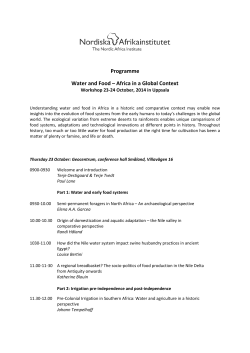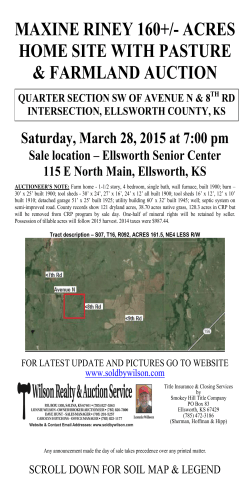
Maintenance of Flood-irrigation Practices on Idaho`s Historic
Maintenance of Flood-irrigation Practices on Idaho’s Historic Floodplains Preserve Critical Habitat for Waterfowl, Waterbirds, and Upland Game Birds. Wetland Landscape of Southern Idaho • 56% of Idaho wetlands have been lost (EPA) • Nearly all historic floodplains have been converted to agriculture • Irrigation is typically a major component in modern site hydrology Flood-irrigated Native Wet Meadows on Private Working Lands • 70% of wetlands in the Intermountain West occur on private lands (IWJV) • 2,300,000 acres of flood irrigated ground in Oregon and Idaho (USDA) • 7.2 million gallons / day allocated to livestock production in Idaho (USDA) • Tremendous continuing opportunity to deliver wetland conservation on working lands. Flood-irrigated Wet Meadows Provide Critical Spring Staging Habitat for Migrating Waterbirds • Migrants leave southern overwintering grounds in critical need of bioenergetic resources prior to arriving on breeding grounds. • Insufficient resources in spring staging areas significantly limit breeding success. VS Benefits of Flood-irrigated Wet Meadows to Sage Grouse • Sage grouse utilize wet meadows for brooding and rearing of young. • Wet meadows, particularly when grazed, can have tremendous invertebrate assemblages. • IWJV Sage Grouse Webinar “…public lands and private waters…” • http://iwjv.org/resource/webinar -public-lands-and-private-waters Floodplain Function • • • • • Enhanced irrigation distribution and efficiency Aquifer recharge Stream temperature amelioration Maintenance of stream flow over greater duration KEEPS THE BATHTUB FULL…LONGER Benefits of Flood-irrigated Wet Meadows to Fisheries • Ameliorates stream temperature through groundwater circulation. • Extends duration of stream flows • Refurbishment of infrastructure allows for installation of fish passage and screening. Western Water-Use Statistics (Maupin 2014) • 57% of irrigation withdrawals (nationally) are for flood irrigation (93% of withdrawals from western states) – 17% reduction from 2000-2010 – 12% reduction from 2010-2014 • 26,200,000 acres in flood irrigation • Flood-irrigated acres decreased by 500,000 acres since 2010 (>100k / yr) • Sprinkler-irrigated acres increased by 1,080,000 acres • Conversion from flood-irrigation is typically UNIDIRECTIONAL 17 Western States 2000-2010: Sprinkler Irrigation increased 13% (>3.1 million acres) Flood-irrigation decreased 17%(~3.8 million acres) Source: US Geological Survey Conversion of Flood-Irrigation to Center Pivot Threatens Floodplain Functions Bellevue Triangle, Blaine County, Idaho 2011 1940 Lower Boise River, Canyon County, Idaho 1953 2010 Floodplain Resilience in a Changing Climate and Landscape OBJECTIVES • Maximize irrigation distribution and efficiency – Infrastructure – Floodplain prioritization • Increase floodplain function and RESILIENCY – Stream restoration • Incisement /entrenchment • Improved livestock management (riparian pasture) • Socioeconomic analysis • OUTREACH Private Working Timberlands comparable to Private Working Floodplains Operator Incentives • Increased management capability, efficiency, and safety. • Maximized distribution of irrigation. • Extended irrigation season. • Increased pasture production. • Increased pasture complexity. • Maintenance of operation viability. – Socioeconomic stability Conservation Tools (MONEY!) • NRCS – ESPA RCPP EQIP – Flood-irrigation CSP – SGI – WREP, GRP, ACEP/ALE • IDFG HIP & USFWS PFW • NAWCA Chris Colson Regional Biologist ccolson@ducks.org 208-608-2441
© Copyright 2025









